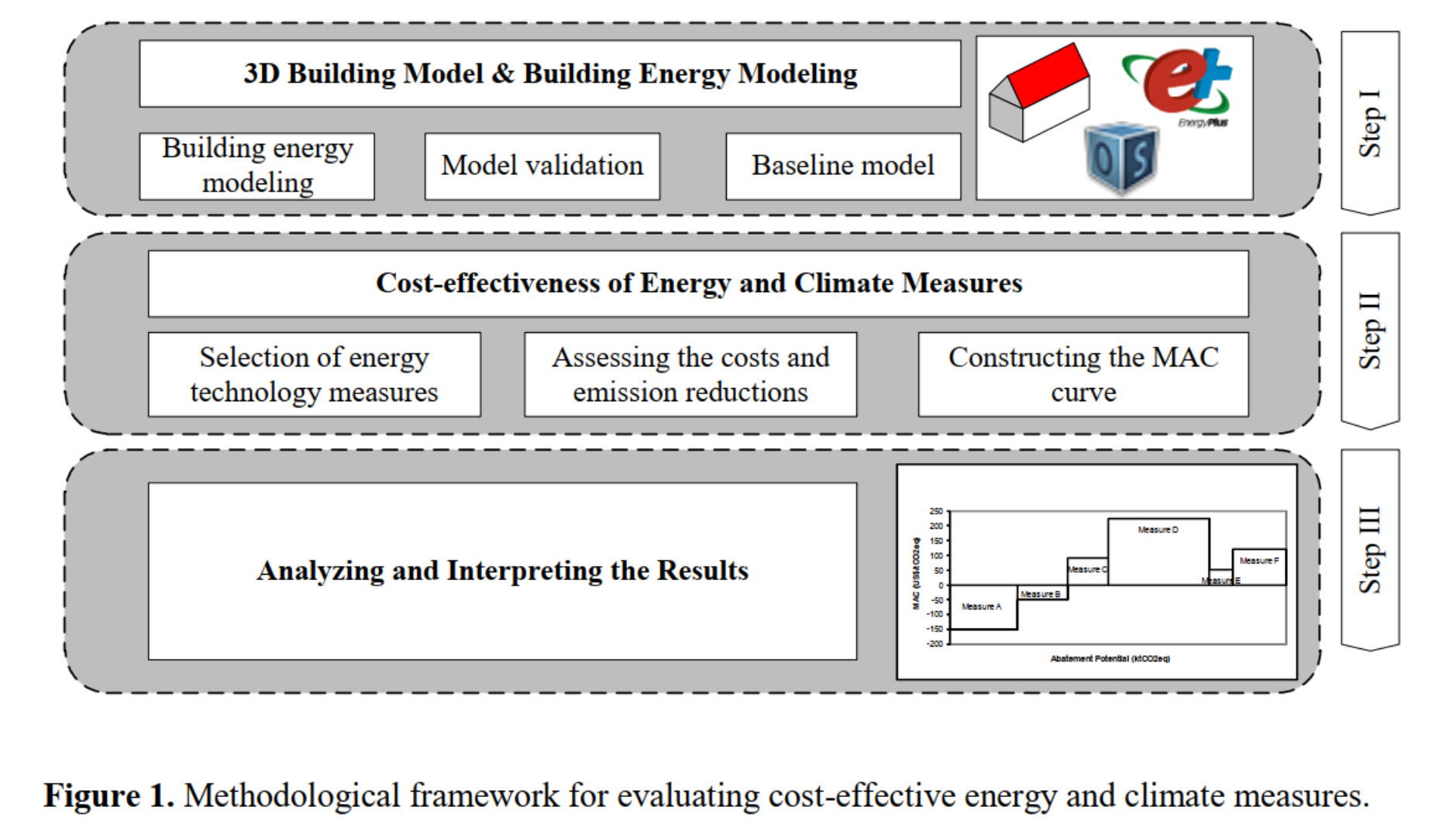Methodological Framework for Evaluating Cost-Effective Energy and Climate Measures in Building Clusters
Main Article Content
Abstract
Building renovation and energy-efficient retrofitting is a growing concern in many building stocks to improve the energy performance and energy-related greenhouse gas (GHG) emission reductions. This paper aims to present the methodological framework for energy and climate change mitigation planning in building clusters. The proposed methodology includes building energy modeling and marginal abatement cost (MAC) curve. It enables to simulate building energy use and GHG emissions associated with energy retrofit measures (ERMs) and to evaluate the cost-effectiveness. The relationship between the cost and emission reduction potentials is presented in terms of a MAC curve. Using a case study of an educational building in Bangkok, Thailand, the energy performance of four ERMs was simulated and a MAC curve was constructed. Findings showed that the baseline emissions are 310 tCO2e and total emissions from implementing four ERMs are 250.64 tCO2e. The improvement of air-conditioning systems contributed the largest share of mitigation potential and was followed by measures relating to building envelopes, building energy management systems, and lighting. On the cost-effectiveness, switching to efficient lighting showed the highest cost-savings of 84.59 US$ per tCO2e. Other ERMs delivered the cost-savings from 50 to 63 US$ per tCO2e. The proposed methodological framework would support the decision-making for the implementation of energy and climate planning at various scales from an individual building to an urban area.
Article Details

This work is licensed under a Creative Commons Attribution-NonCommercial-NoDerivatives 4.0 International License.
References
G. Timilsina, A. Sikharulidze, E. Karapoghosyan, S. Shatvoryan, Development of marginal abatement cost curves for the building sector in Armenia and Georgia, Energy Policy 108 (2017) 29 – 43.
Y. Lou, Y. Ye, Y. Yang, W. Zuo, Long-term carbon emission reduction potential of building retrofits with dynamically changing electricity emission factors, Building and Environment 210 (2022) 108683.
C. Seeley, S. Dhakal, Energy efficiency retrofits in commercial buildings: An environmental, financial, and technical analysis of case studies in Thailand, Energies 14(9) (2021) 2571.
McKinsey, Pathways to a Low-Carbon Economy: Version 2 of the Global Greenhouse Gas Abatement Cost Curve. Technical Report, McKinsey & Company, 2009.
F. Kesicki, Marginal abatement cost curves: Combining energy system modelling and decomposition analysis, Environmental Modeling & Assessment 18 (2013) 27 – 37.
A. Vogt-Schilb, S. Hallegatte, C. Gouvello, Marginal abatement cost curves and the quality of emission reductions: a case study on Brazil, Climate Policy DOI: 10.1080/14693062.2014.953908 (2014) 703 – 723.
A. Vogt-Schilb, S. Hallegatte, Marginal abatement cost curves and the optimal timing of mitigation measures, Energy Policy 66 (2014) 645 – 653.
F. Levihn, C. Nuur, S. Laestadius, Marginal abatement cost curves and abatement strategies: Taking option interdependency and investments unrelated to climate change into account, Energy 76 (2014) 336 – 344.
C. Sotiriou, A. Michopoulos, T. Zachariadis, On the cost-effectiveness of national economy-wide greenhouse gas emissions abatement measures, Energy Policy 128 (2019) 519 – 529.
P. Muangjai, W. Wongsapai, R. Bunchuaidee, N. Tridech, D. Damrongsak, C. Ritkrekkrai, Marginal abatement cost of electricity generation from renewable energy in Thailand, Energy Reports 6 (2020) 767 – 773.
K. Promjiraprawat, P. Winyuchakrit, B. Limmeechokchai, T. Masui, T. Hanaoka, Y. Matsuoka, CO2 mitigation potential and marginal abatement costs in Thai residential and building sectors, Energy and Buildings 80 (2014) 631 – 639.
A. Chaichaloempreecha, P. Chunark, B. Limmeechokchai, Assessment of Thailand’s energy policy on CO2 emissions: Implication of national energy plans to achieve NDC target, International Energy Journal 19(2) (2019) 47 – 60.
N. Ibrahim, C. Kennedy, A methodology for constructing marginal abatement cost curves for climate action in cities, Energies 9(4) (2016) 227.
EnergyPlus, Engineering References, US Department of Energy, 2019.
A. Al-janabi, M. Kavgic, A. Mohammadzadeh, A. Azzouz, Comparison of EnergyPlus and IES to model a complex university building using three scenarios: free-floating, ideal air load system, and detailed, Journal of Building Engineering 22 (2019) 262 – 280.
N. Kampelis, G. I. Papayiannis, D. Kolokotsa, G. N. Galanis, D. Isidori, C. Cristalli, A. N. Yannacopoulos, An integrated energy simulation model for buildings, Energies 13 (2020) 1170.
P. Rittidatch, A. Phdungsilp, S. Vorarat, Evaluation of energy renovation measures of the building envelope in educational building using building energy modeling: a case study in Dhurakij Pundit University, Pathumwan Academic Journal, 11(31) (2021) 128 – 142.
V. Yungchareon, B. Limmeechokchai, Energy analysis of the commercial sector in Thailand: Potential savings of selected options in commercial building, The Joint International Conference on Sustainable Energy and Environment (SEE), 2004, pp. 496 – 501.


